
For my dissertation research, I am studying which native Willamette Valley wildflowers are most visited by pollinators and natural enemies for use in home gardens and urban landscaping. I’ve previously shared preliminary results from my field study on our blog, namely pollinator abundance and richness. For a refresher, here are summaries from 2017, 2018, and 2019.
Initial survey
Determining which of these flowers are most attractive to insects is only half of the equation — I also want flowers that are attractive to gardeners. To investigate this I developed two surveys — thanks to anyone reading who took them! The first simply asked gardeners to rank the aesthetic appeal of my study plants, as well as how likely they would be to utilize them in their home gardens. This allowed me to get a baseline understanding of how appealing these flowers are for use in home gardens and landscaping.
As you can see in the figure below, many of the plants most visited by bees (highlighted in orange) were the least attractive to gardeners (Fig. 1), while plants gardeners liked the most (e.g. Iris, Columbine) were hardly visited by bees. However, its notable that many of these native wildflowers ranked around a four on a 1-5 scale, showing that these flowers do have a high potential appeal for use in landscaping!
Figure 1: Gardener ranked aesthetic appeal of study flowers on a scale of 1-5. Orange bars note plants that were consistently highly visited pollinator plants. N=587
Follow-up survey
The follow-up survey consisted of a subset of ten flowers most visited by bees, and again asked respondents to rank the aesthetic appeal and likelihood of planting for each of these flower species. Then, they were shown facts about and images of bees that visit each flower species, and asked whether they viewed each plant species more favorably, less favorably, or the same. Finally, they were asked to re-rank how attractive they found the flower species and how likely they would be to use the species in their garden, both on a scale of 1-5.
Gardener acceptance
This second survey showed a remarkable increase in gardener acceptance of pollinator friendly native plants after being educated on plant-pollinator associations. Over 80% of respondents stated that they viewed Clarkia amoena as more attractive after gain, and over 60% of respondents viewed Phacelia heterophylla, Madia elegans, and Gilia capitata as more attractive (Fig. 2).
Figure 2: Percent of respondents viewing flower species as more attractive after learning about pollinator associations. N=184.
Likelihood of planting
After learning about the benefits these flowers provide to pollinators, gardeners were also more likely to plant all ten flower species (Fig. 3). Notably, they were 40% more likely to plant Phacelia heterophylla, (a species that ranked as the least aesthetically appealing overall in the first survey). As a whole, they were also over 20% more likely to plant Solidago canadensis, Clarkia amoena. Similar increases were also observed in likelihood of planting Oreganum vulgare and Nepeta cataria. Many of the plants that showed a smaller percent change are species that started out with a higher aesthetic appeal (e.g. Gillia capitata, Lavendula intermedia, Aster subspicatus), meaning gardeners were already very likely to include these plants in their home garden before learning about the ecological benefits they provide.
Figure 3: Percent change in respondent’s likelihood of planting each top pollinator flower after learning about the pollinators associated with each. N=184
Ecological beauty
What does this all mean? This suggests that although native plants are frequently denounced as being less attractive than showy garden species, many home gardeners are still willing to use native flowers in their landscaping. Additionally, this lends credence to the concept of “ecological beauty” – that many gardeners are willing to utilize plants that will increase the habitat value and wildlife diversity in their yards.




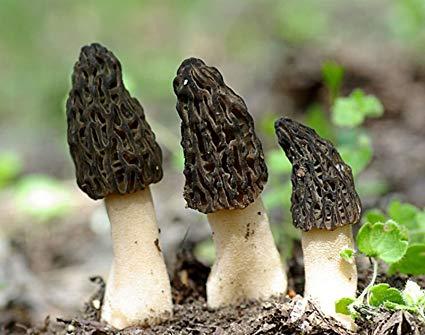












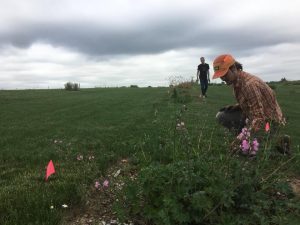
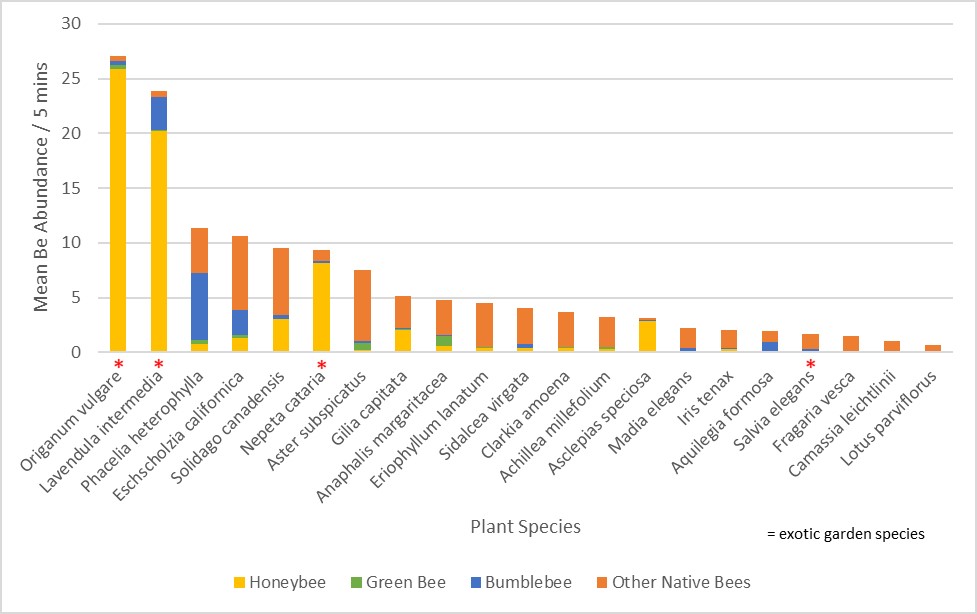
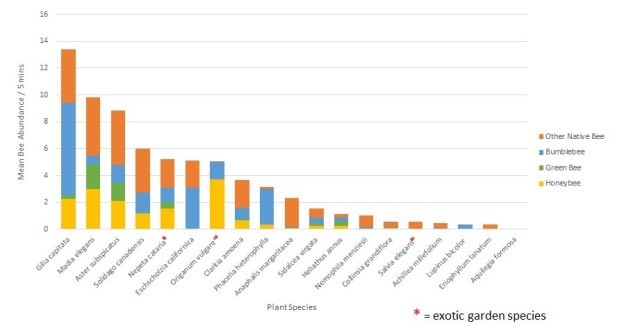
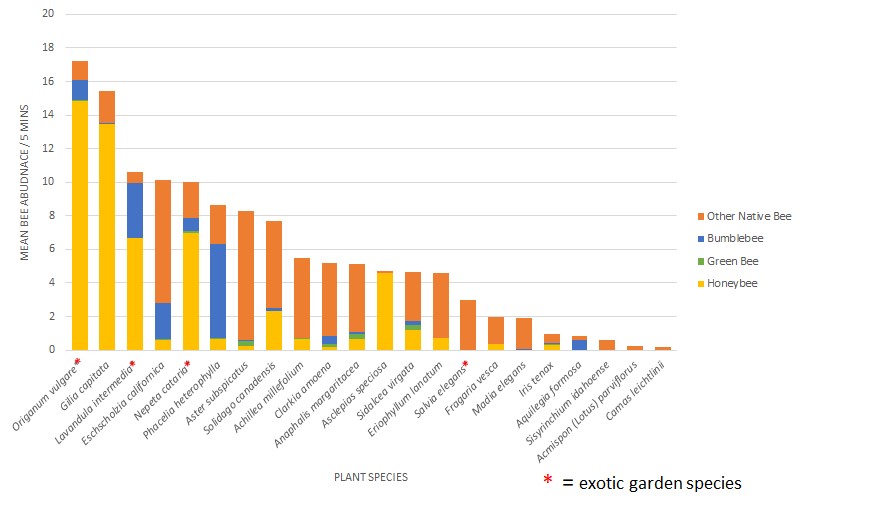

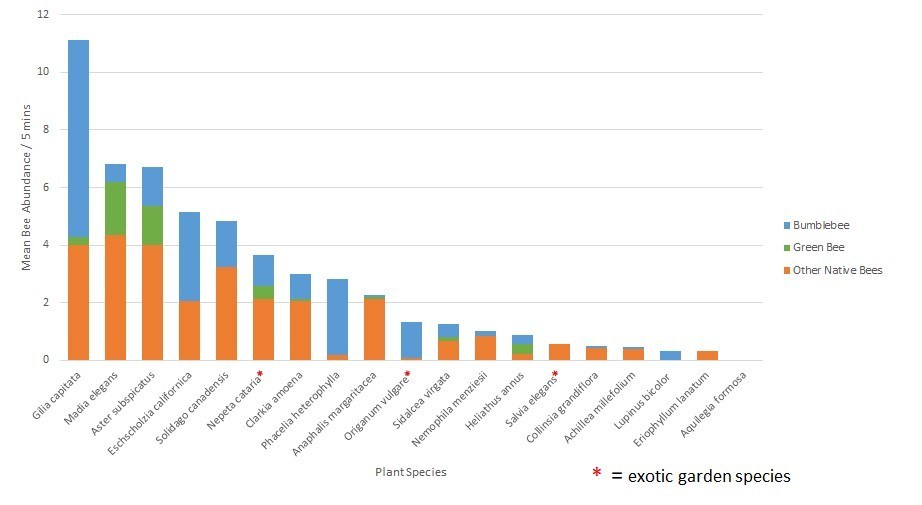
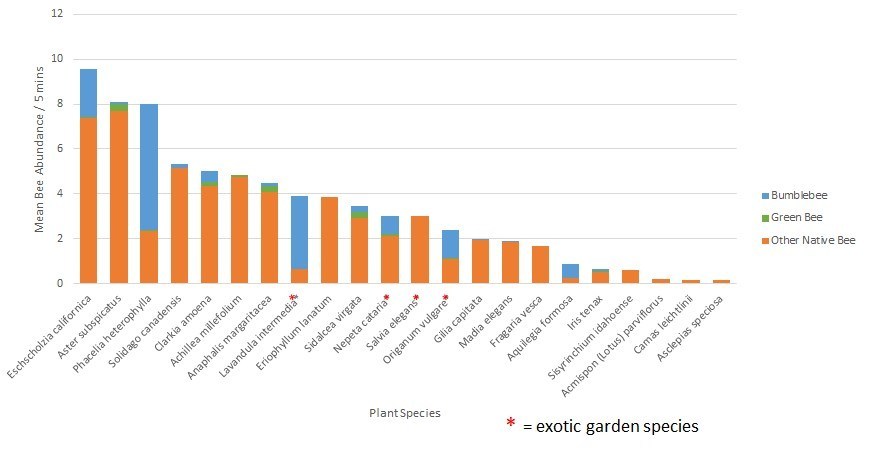
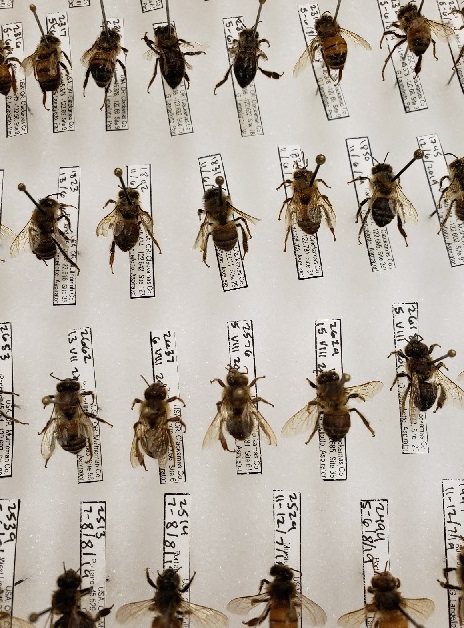



 “
“





